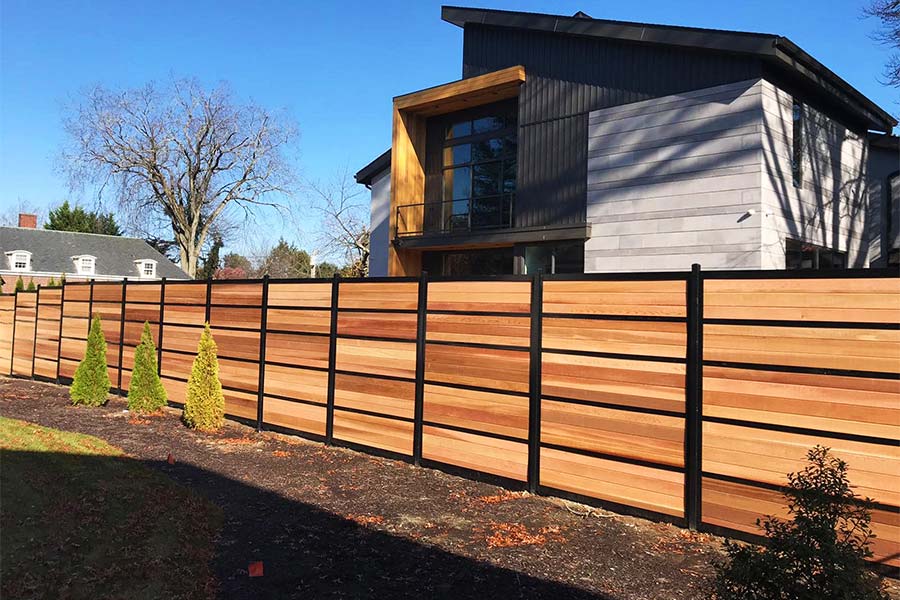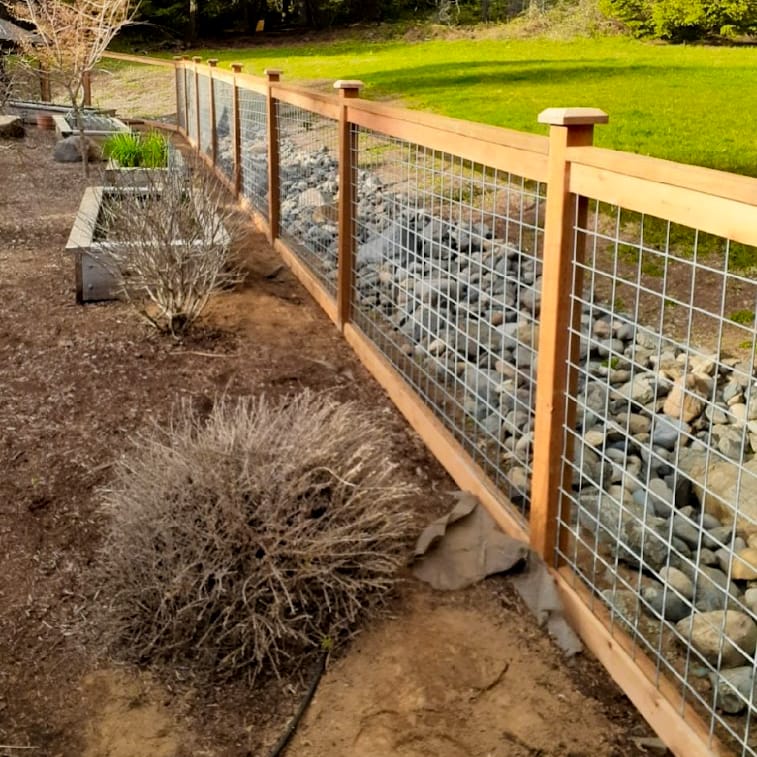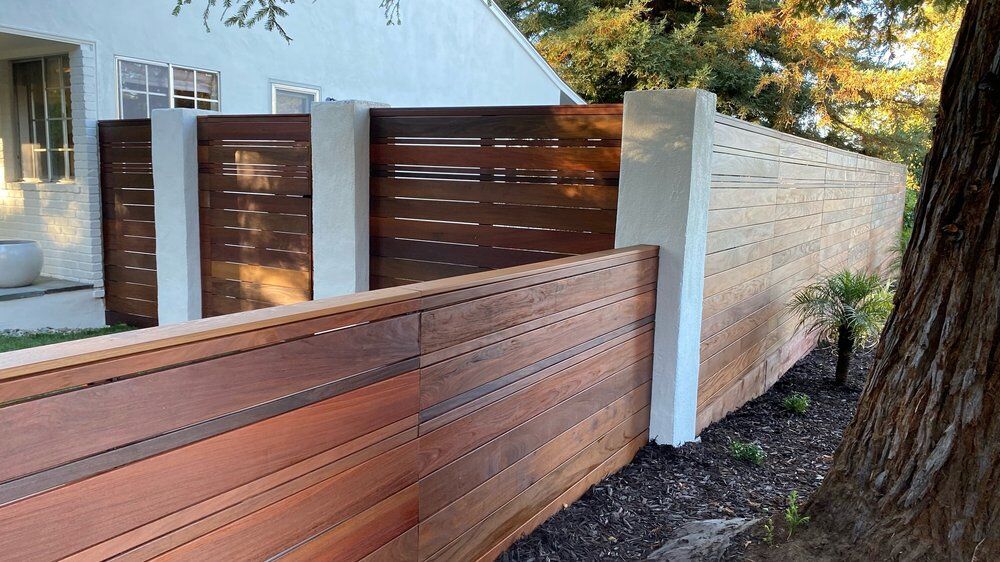All Categories
Featured

As sustainability comes to be an expanding priority for companies and homeowners, the demand for green structure materials encompasses outdoor rooms, including fencings. Traditional secure fencing products such as metal, vinyl, and wood can have substantial ecological impacts, from deforestation to chemical treatments and plastic waste. There are a number of eco-friendly fence choices available that not just minimize the carbon impact yet likewise provide durability and visual appeal. Allow's check out several of the most popular and lasting fencing products that can help you go environment-friendly while still improving your home's design, personal privacy, and protection.
- Bamboo Secure fencing. Bamboo is just one of one of the most lasting materials on the market, and it is significantly used in fencing building due to its rapid growth and stamina. Unlike hardwood trees, bamboo is a grass that can grow back totally within just a couple of years, making it very sustainable. It's normally resistant to parasites and rot, which means it doesn't require severe chemicals or therapies, making it a green choice.

Perks: Bamboo fencings are long lasting, low-maintenance, and biodegradable. They are naturally resistant to termites and dampness, decreasing the demand for chemical preservatives. Furthermore, bamboo helps in reducing dirt disintegration due to its deep origin systems. Considerations: Bamboo can be more pricey than some typical timber secure fencing alternatives, and it might not appropriate for areas with extreme cool or freezing temperature levels, as it can come to be brittle gradually. 2. Recycled Products Fence. Fencing made from recycled products is a fantastic means to advertise sustainability. Several makers currently supply fences made from post-consumer plastic, recycled wood, or perhaps repurposed steel. By selecting fence made from recycled products, you minimize the demand for brand-new resources and help prevent waste from winding up in land fills. Many composite materials, as an example, are made from recycled plastic containers, wood scraps, and various other materials that would certainly or else be discarded.
Conveniences: Recycled product fencings aid conserve natural deposits, decrease contamination, and lower the environmental influence of the manufacturing procedure. They can also offer outstanding toughness, resisting degeneration, mold and mildew, and termites. Factors to consider: While recycled product fences are environmentally friendly and very durable, they might not have the exact same natural aesthetic that some property owners look for. Manufacturers now use designs that mimic the look of timber or stone. 3. Compound Fencing. Compound secure fencing is made from a mix of timber fibers and plastic, often including recycled products. This mix creates a very sturdy, low-maintenance fence that does not require regular paint or staining, making it a lasting alternative. Composite fences are resistant to rot, pests, and weathering, which implies they can last for several years without the demand for frequent replacements.

Conveniences: Composite fences are long-lasting and can stand up to rough weather condition problems, reducing the demand for repairs or replacements. Considering that composite products usually consist of recycled content, they aid reduce plastic waste. In addition, they do not call for harmful chemicals or treatments. Factors to consider: Composite fences can have a greater ahead of time expense than typical timber or vinyl, though their durability and minimized upkeep prices often make them an extra cost-efficient choice in the future. 4. Living Fencings. Living fencings, likewise called hedges, are a green and aesthetically pleasing option that includes planting dense bushes, trees, or climbing up plants along your building line to produce an all-natural obstacle. Popular plants for living fencings include boxwood, privet, and holly. These plants can be expanded to offer privacy, windbreaks, and noise decrease while adding to ecological health.
Conveniences: Living fences promote biodiversity, boost air top quality, and absorb co2, making them one of one of the most environmentally friendly fence alternatives. They likewise supply a natural habitat for birds and insects and can reduce sound pollution and help regulate temperatures in your backyard. Factors to consider: Living fences call for routine upkeep, such as trimming, watering, and occasionally pest control. They also take some time to develop and may not supply prompt personal privacy contrasted to solid wood or vinyl fencings. 5. Cedar and Redwood Fence. Cedar and redwood are preferred all-natural timber options for fences. These materials are sturdy and normally immune to rot, parasites, and wetness, which implies they normally don't require using damaging chemical treatments. When sourced from sustainably handled forests, cedar and redwood fences can be an eco-friendly selection that gives both charm and long life.
Perks: These timbers are eco-friendly, eco-friendly, and offer exceptional resilience and all-natural beauty. Cedar and redwood likewise have a reduced ecological effect when harvested sensibly, making them an environment-friendly option for many house owners. Considerations: While cedar and redwood fencings have ecological advantages, they do still need occasional upkeep and are a lot more expensive than various other wood choices. It is very important to make certain that the timber is sourced from lasting woodlands to optimize its ecological benefits. 6. Stone and Block Secure Fencing (Reclaimed) Rock and block fencings are exceptionally durable and low-maintenance, and they can be environmentally friendly when made from recovered materials. Reclaimed stone and brick are often salvaged from old structures or building jobs, reducing waste and preserving natural deposits. These products use a timeless look and are highly immune to weathering, making them a long-lasting solution for secure fencing.
Conveniences: Recovered stone and brick are sturdy, visually pleasing, and require marginal maintenance. By repurposing these products, you help in reducing the demand for brand-new resources and reduce waste in landfills. Factors to consider: The setup of stone and block fencings can be labor-intensive and a lot more costly compared to other products, yet their long life and reduced maintenance requirements can make them cost-efficient in the long run. Final thought. Eco-friendly fence alternatives are not just excellent for the environment however also provide longevity, reduced maintenance, and visual allure. Whether you select bamboo, recycled products, composite secure fencing, living fencings, or lasting timber like cedar and redwood, there are lots of means to decrease your environmental footprint while boosting your building's appearance. By picking these eco-conscious products, you can add to a much healthier planet and produce an outside room that shows your worths.
Latest Posts
The Benefits of Routine Vehicle Maintenance at Montclare Auto Repair Saves You Money
Published en
1 min read
Choosing the Right Roofing Color: Influence On Power Effectiveness
Published en
1 min read
Boost Your Home's Outside with Weathercraft's House siding Solutions
Published en
1 min read
More
Latest Posts
The Benefits of Routine Vehicle Maintenance at Montclare Auto Repair Saves You Money
Published May 26, 25
1 min read
Choosing the Right Roofing Color: Influence On Power Effectiveness
Published May 24, 25
1 min read
Boost Your Home's Outside with Weathercraft's House siding Solutions
Published May 24, 25
1 min read